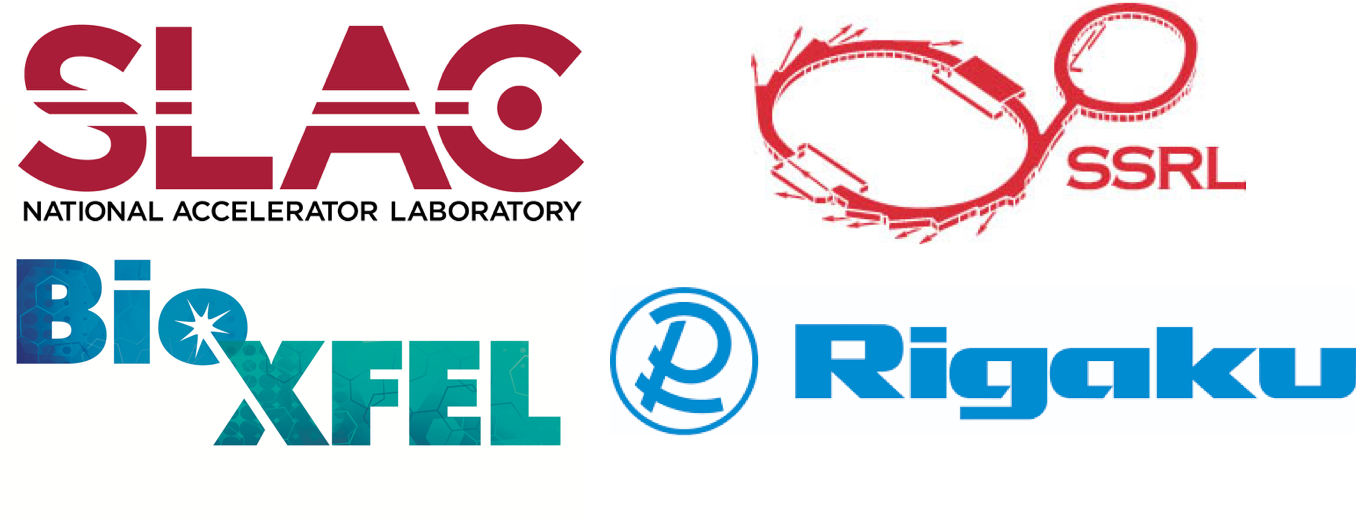Events: Details
| S | M | T | W | T | F | S |
|---|---|---|---|---|---|---|
| 1 | 2 | |||||
| 3 | 4 | 5 | 6 | 7 | 8 | 9 |
| 10 | 11 | 12 | 13 | 14 | 15 | 16 |
| 17 | 18 | 19 | 20 | 21 | 22 | 23 |
| 24 | 25 | 26 | 27 | 28 | 29 | 30 |
| 31 |
X-ray Data Collection Workshop
| Category: | Workshop |
|---|---|
| Description: | BioXFEL, UPR, SSRL, and Rigaku are coordinating a scientific workshop for protein structure researchers in Puerto Rico on March 16th-17th, 2019. We will be offering a two-day workshop on X-ray data collection that provides hands-on training in X-ray data collection on a Rigaku home source and remotely at SSRL. The workshop will provide participants with a fundamental overview of the data collection process as well as practical considerations for sample handling, data collection strategies and logistics that are necessary to collection X-ray diffraction data from macromolecular samples. We will also provide a brief overview of the requirements for collecting Small Angle X-ray Scattering (SAXS) and X-ray Absorption Spectroscopy (XAS) data at a synchrotron. This will include lectures from experts in the field, demonstration and hands-on training sessions for all participants. The workshop will take place on March 16th - 17th, 2019 in the Molecular Sciences Research Center in San Juan PR. Registration is free and includes lunch and coffee breaks. Please register for this event HERE.
Sponsored by:
Agenda: Day 1
8:00 Light Breakfast 8:30 Clyde Smith (SSRL) – Introduction to SSRL remote access beamlines and data collection 9:15 Silvia Russi (SSRL) – Room temperature data collection and UV-vis spectroscopy 10:00 Jeney Wierman (SSRL) – Serial synchrotron crystallography 10:45 Coffee break 11:00 Jeney Wierman/Silvia Russi (SSRL) – Live remote access demonstration at SSRL 11:45 Thomas Weiss (SSRL) – Small Angle X-ray Scattering at SSRL 12:30 Lunch 1:30 Concurrent hands-on sessions (i) Installation of NX client software, SSRL User Portal registration and obtaining User accounts (Clyde Smith and Jeney Wierman) (ii) Sample and pin preparation, and the use of SSRL cassettes and Unipucks (Silvia Russi) (iii) Remote SAXS data collection from samples sent to SSRL (Thomas Weiss) (iv) Rigaku home source X-ray training and demonstration (Pierre LaMagueras) 4:00 Wrap-up and final questions Day 2 Hands-on data processing training and remote access data collection sessions. Times to be scheduled after samples are shipped.
SAXS: Data processing tutorials (with data collected remotely on Day 1) MX: Remote access data collection from crystals sent to SSRL and Data processing tutorial
Summary This workshop will describe and demonstrate state-of-the-art facilities at the Stanford Synchrotron Radiation Lightsource (SSRL) that are available to the general user community for structural biology research. All SSRL crystallography beam lines are fully remote accessible and offer advanced robotics for automated crystal quality screening. An intense micro-focus beamline, BL12-2, enables rapid “shutterless” data collection using very small crystals. A UV-Vis microspectrometer is available at BL9-2 to confirm the electronic state for metalloprotein complexes and poised intermediates and to monitor specific effects of radiation exposure. BL4-2 is dedicated to small angle scattering and diffraction studies on primarily non-crystalline systems. BL9-3 and BL7-3 are X-ray Absorption Spectroscopy beamlines dedicated to biological experiments on enzymes containing metal centers.
At the crystallography beamlines, cryo-cooled crystals are mounted by the beamline robot and screened for diffraction quality in a matter of hours without intervention. Full diffraction data sets can be collected from the best quality crystals. The screening and data collection experiment can be controlled from the experimenter’s home laboratory using remote access tools. This remote capability is available on all SSRL macromolecular crystallography beamlines.
The BL4-2 small-angle X-ray scattering (SAXS) station covers the range of characteristic length scale of a few Angstroms to a few micrometers by the combined use of a pin-hole geometry camera, which can be automatically configured to have one of 7 sample-to-detector distances, and a separate ultra-small angle scattering setup. A Rayonix MX225-HE area detector is the primary detector. For fast Time-resolved studies there is also a Dectris Pilatus 300K pixel array detector system available. The facility provides a large selection of special sample handling devices, such as stopped-flow rapid mixers, capillary flow cells and automated sample changer for solution scattering among others.
During this workshop, Clyde Smith (SSRL) will give an introduction the SSRL Macromolecular Crystallography Resource, Thomas Weiss (SSRL) will describe the SSRL SAXS beamline and experiments, Riti Sarangi will present on overview the XAS beamline capabilities, Jeney Wierman (SSRL) will give a live remote access demonstration and connect to some SSRL beamlines to present the features accessible to remote users, and Silvia Russi will describe some newer types of experiments which can be done at SSRL, including room temperature data collection and serial crystallography. There will also be hands-on component covering sample and pin preparation, the use of SSRL cassettes and Unipucks, installation of the NX client software, assistance with SSRL User Portal registration and obtaining User accounts.
|
| When: |
Saturday, March 16 2019, 08:00 AM - 5:00 PM (ET) (UTC -05:00) Eastern Time (US & Canada), Bogota, Lima |
| Contact: | wbauer@hwi.buffalo.edu |
| Where: | San Juan, Puerto Rico Molecular Science Research Complex |




